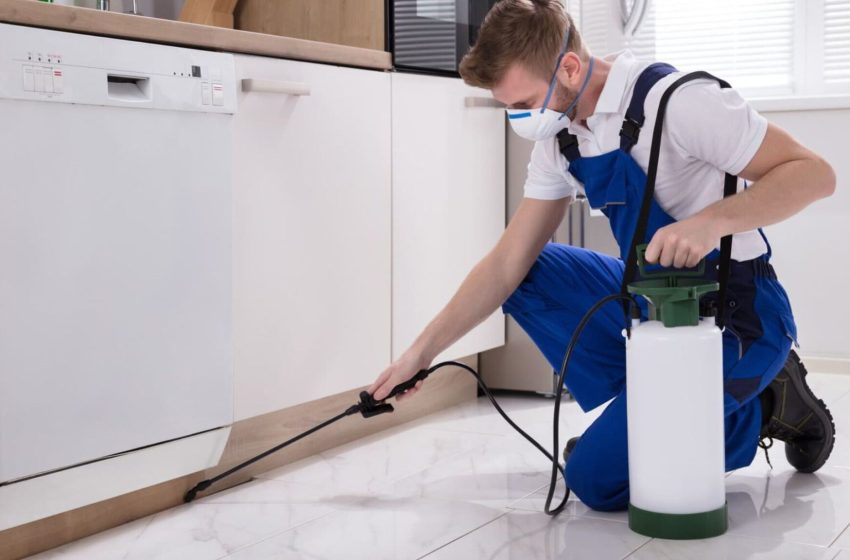Bed Bugs Inspection: A Comprehensive Guide for Homeowners

Bed bugs are tiny, blood-sucking pests that have become a significant problem for many households and businesses. These nocturnal creatures can infest even the cleanest of homes, hiding in cracks, crevices, and furniture seams. One of the most important steps in addressing a bed bug problem is a thorough bed bugs inspection. Early detection and prompt action can prevent these pests from spreading and causing further discomfort.
In this blog, we will explore the importance of a bed bugs inspection, how to conduct one, signs to look for, and why professional inspection is essential in keeping your living space bed bug-free.
What Are Bed Bugs?
Before diving into the inspection process, it’s important to understand what bed bugs are. Bed bugs are small, oval-shaped insects that are about the size of an apple seed. They are typically reddish-brown in color and have flat bodies that allow them to hide in cracks and crevices.
Bed bugs feed on the blood of humans and animals, typically at night, when their host is asleep. Their bites can cause itching, discomfort, and in some cases, allergic reactions. These pests are often found in beds, but they can also infest other areas, such as furniture, walls, and even personal belongings like luggage.
Why is Bed Bugs Inspection Important?
A bed bugs inspection is essential for several reasons:
-
Early Detection: Detecting a bed bug infestation early can prevent it from spreading throughout your home. Bed bugs multiply quickly, and an infestation can grow larger if not addressed promptly.
-
Identifying Hiding Spots: Bed bugs are notorious for hiding in small cracks and crevices. An inspection will help identify where they are nesting, making it easier to treat the problem.
-
Prevention of Further Infestation: If you suspect bed bugs but aren’t sure, an inspection can provide peace of mind. It also ensures that you address any potential infestations before they become severe.
-
Effective Treatment: A thorough bed bugs inspection will help determine the level of infestation and the best course of action for treatment, whether it involves pesticides, heat treatment, or other methods.
How to Conduct a Bed Bugs Inspection
A bed bugs inspection involves checking several key areas in your home where bed bugs are likely to hide. Here’s a step-by-step guide on how to perform a comprehensive inspection:
1. Examine Your Bed and Bedding
Since bed bugs are most commonly found in beds, start by thoroughly inspecting your bed and bedding.
- Check the seams and edges of your mattress: Use a flashlight to look for small reddish-brown spots (which may be bed bug excrement), small pale-yellowish skins (shed by bed bugs as they mature), or live bed bugs.
- Inspect the bed frame and headboard: Bed bugs can hide in cracks, joints, and the edges of bed frames. Use a magnifying glass if needed to spot any bugs or eggs.
- Look for stains: Bed bug bites can leave behind small blood stains on sheets and pillowcases. This is another sign of an infestation.
2. Look for Bed Bugs in Furniture
Bed bugs can hide in any furniture close to the bed. Inspect chairs, couches, and even dressers for signs of these pests.
- Check seams, cushions, and cracks in upholstered furniture.
- Inspect behind and under furniture: Bed bugs often hide behind furniture legs or underneath cushions. A flashlight can help you spot these pests.
3. Check for Bed Bugs in Walls and Baseboards
Bed bugs can crawl into cracks in walls and baseboards. Inspect these areas for any signs of activity. This is particularly important if you live in an apartment building, as bed bugs can travel between units.
- Look for cracks or gaps in the walls or baseboards: Bed bugs may hide in these areas, especially if they are near a neighboring unit.
4. Examine Personal Belongings
If you have recently traveled or suspect bed bugs may have been brought into your home on luggage, clothing, or other items, conduct an inspection of personal belongings.
- Check your luggage: Bed bugs can hide in luggage seams, zippers, and pockets. Inspect your clothing and other belongings for any signs of infestation.
- Inspect books and electronics: These items are also common hiding spots for bed bugs, particularly in areas with small cracks or crevices.
5. Use Bed Bug Traps
Bed bug traps can be placed around your bed and furniture to monitor for activity. These traps use a combination of heat and carbon dioxide to attract bed bugs, trapping them for easy identification.
6. Seek Professional Help
If you are unable to find any bed bugs but still suspect an infestation, it might be time to call in a professional. Pest control experts can conduct a more thorough bed bugs inspection using advanced tools like bed bug detection dogs or thermal cameras.
Signs of Bed Bug Infestation
Even if you don’t see live bed bugs, there are other signs that you may have an infestation:
- Bites: Bed bug bites appear as small, red, itchy welts, often in a line or cluster. They typically occur on exposed skin during sleep.
- Fecal stains: Bed bugs leave behind small dark spots of feces, which may appear on your sheets, mattresses, or furniture.
- Eggs and egg shells: Bed bug eggs are tiny and white, about the size of a pinhead. Finding them around your bed or furniture is a sure sign of an infestation.
- Shed skins: As bed bugs grow, they shed their skins. These exoskeletons may be found near their hiding places.
When Should You Schedule a Professional Bed Bugs Inspection?
While DIY inspections can be effective, there are certain circumstances where a professional bed bugs inspection is the best course of action:
- If you cannot find the bugs: Bed bugs are experts at hiding, so even if you have done a thorough inspection, you may still miss signs of their presence. A professional inspector has the tools and experience to identify hidden bed bugs.
- If the infestation is severe: If you discover a significant infestation, it is best to call a professional. They will know the most effective methods for treatment.
- If you’re unsure about the signs: Sometimes, signs of an infestation can be subtle. A professional inspection ensures you won’t miss any key indicators.
Conclusion
A bed bugs inspection is the first and most crucial step in addressing a bed bug infestation. By being vigilant and conducting thorough inspections of your home, you can catch an infestation early and take swift action to eliminate the problem. Whether you conduct a DIY inspection or hire a professional, regular inspections can help ensure your home remains free from these pesky insects.



